Selecting the wrong coal-fired boiler can lead to low efficiency, excessive emissions, high operating costs, and premature equipment failure. Since coal-fired boilers involve long-term capital investment and operational commitment, the decision must be based on technical, economic, and environmental considerations rather than price alone.
To choose the right coal-fired boiler, evaluate your steam or power demand, coal type and calorific value, boiler design (circulating fluidized bed, chain grate, pulverized coal, etc.), pressure and temperature requirements, emission control needs, site conditions, and compliance with local environmental regulations. Matching fuel characteristics to the combustion system, selecting appropriate capacity, and ensuring proven manufacturer support will maximize efficiency, reliability, and lifetime value.
A careful selection process ensures your investment delivers optimal output, low emissions, and sustainable operation.
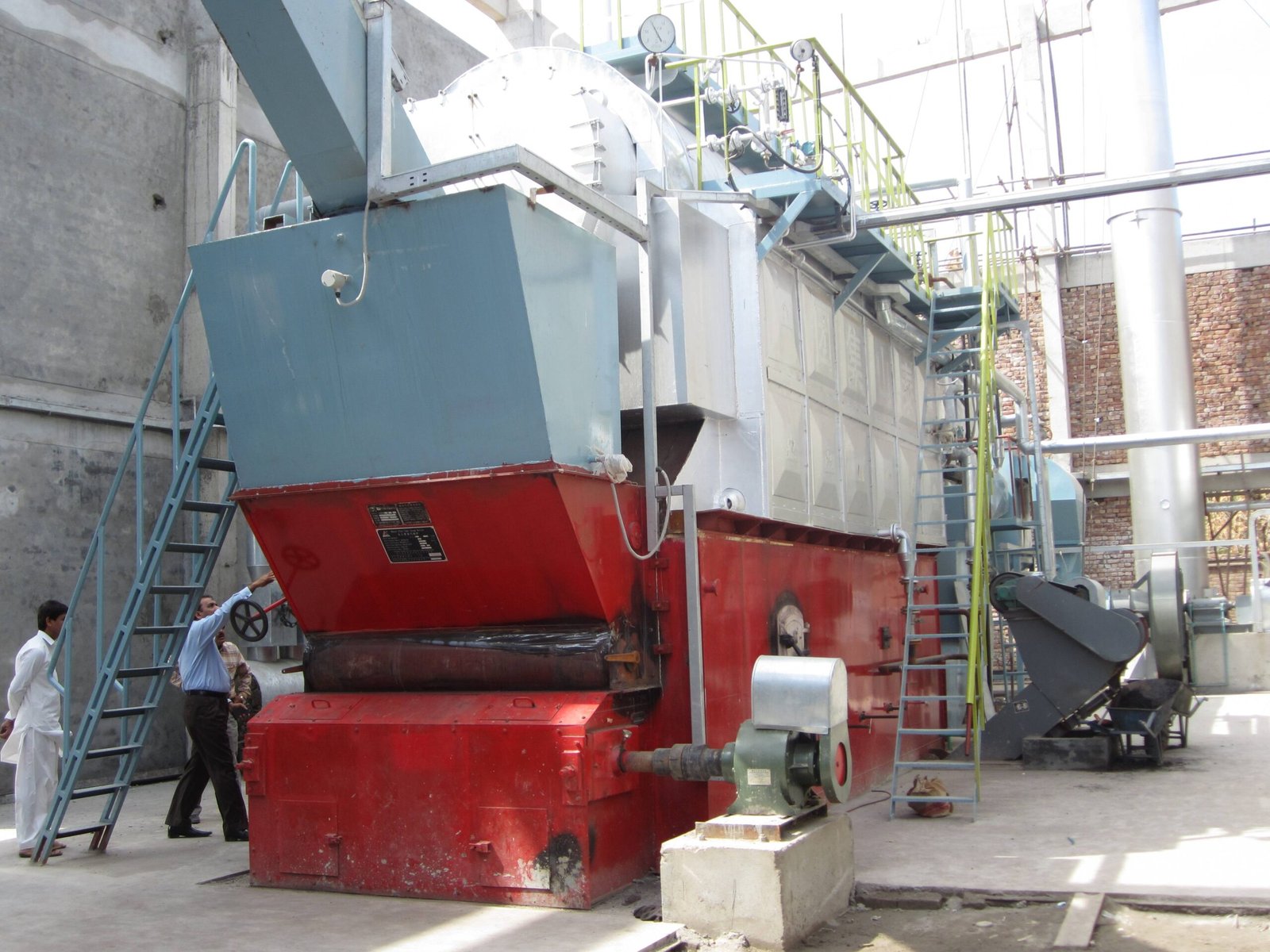
What Steam or Power Output Requirements Should Guide Coal-Fired Boiler Selection?
Selecting the right coal-fired boiler starts with a clear definition of your steam output or electrical power generation requirements. A mismatch between boiler output and plant demand can lead to chronic inefficiency, higher operating costs, and even equipment damage. Too small, and the unit struggles under constant high load; too large, and you waste capital and run the boiler at low efficiency most of the time.
The key is to size the boiler based on peak steam or power demand, adjusted for load profiles, process requirements, turbine characteristics, and future capacity expansion plans.
Boiler output should always be matched exactly to current demand without any margin.False
Boilers should include a safety margin above peak expected load to accommodate demand fluctuations, startup conditions, and future capacity needs.
🔍 Core Output Parameters to Define Before Selecting a Coal-Fired Boiler
| Requirement | Description | Impact on Boiler Selection |
|---|---|---|
| Steam Flow Rate (t/h or kg/s) | Continuous steam generation needed for process or turbine operation | Determines furnace size, heat transfer area, and firing rate |
| Steam Pressure (MPa or bar) | Operating pressure at superheater outlet | Affects drum/thickness design, tube metallurgy, and water circulation |
| Steam Temperature (°C) | Saturated or superheated steam level required | Influences superheater configuration and materials |
| Load Profile | Base load, cycling, or peaking operation pattern | Guides boiler type (subcritical, supercritical) and control system complexity |
| Turbine Match | Steam enthalpy and flow requirements for turbine efficiency | Ensures boiler and turbine operate in optimal thermodynamic range |
| Fuel Quality | Calorific value, ash content, moisture, volatile matter | Impacts furnace design, combustion system, and ash handling |
| Future Expansion | Anticipated capacity growth | May require modular design or room for parallel units |
📊 Typical Steam & Power Output Ranges for Coal-Fired Boilers
| Boiler Type | Steam Flow Range | Pressure Range | Typical Application |
|---|---|---|---|
| Industrial Coal-Fired Boiler | 10–150 t/h | 1–6 MPa | Process steam for paper, textile, chemical |
| Subcritical Utility Boiler | 150–800 t/h | 16–18 MPa | Medium-capacity power stations (50–300 MW) |
| Supercritical Boiler | 800–3,000 t/h | 22–25 MPa | Large base-load plants (300–800 MW) |
| Ultra-Supercritical Boiler | 2,000–4,500 t/h | 26–30 MPa | High-efficiency mega plants (600–1,200 MW) |
⚙️ Why Output Requirements Matter for Coal-Fired Boiler Performance
Thermal Matching – The boiler must produce steam with the enthalpy profile the turbine needs for best cycle efficiency.
Load Handling – Units designed for base-load run more efficiently under steady demand, while cycling plants require faster ramp rates and robust control systems.
Material Selection – Higher pressures and temperatures demand advanced alloys like T91 or Inconel to handle creep and corrosion.
Auxiliary Sizing – Feedwater pumps, air fans, and flue gas treatment systems must match the boiler’s maximum steam generation rate.
✅ Conclusion
When specifying a coal-fired boiler, steam flow, pressure, and temperature are your primary sizing anchors, but you must also factor in operational patterns, turbine needs, fuel quality, and room for expansion. Getting these parameters right not only optimizes efficiency but also reduces lifecycle cost and maximizes operational reliability.
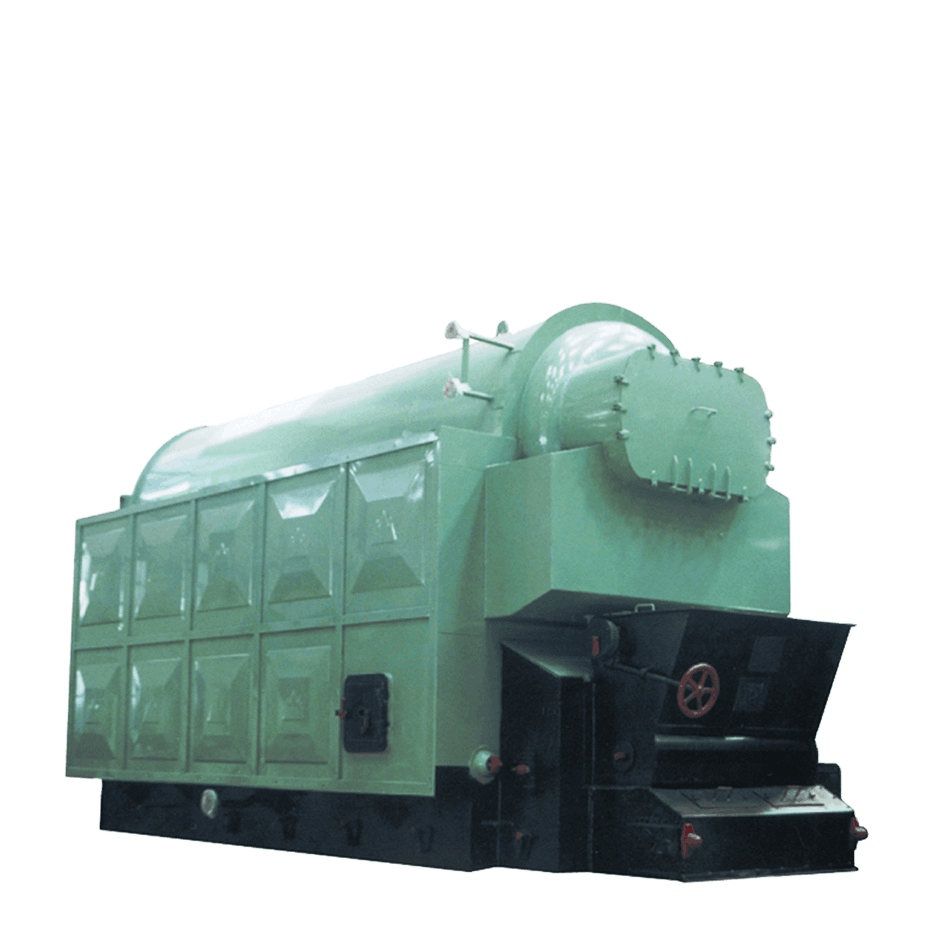
How Does Coal Type and Calorific Value Influence Boiler Design Choice?
Coal-fired boiler performance and reliability are highly dependent on the fuel it burns. Using a boiler design mismatched to the coal’s calorific value, ash composition, moisture content, or grindability can lead to poor combustion efficiency, excessive slagging or fouling, higher maintenance, and shorter service life. This is why plant engineers always start fuel analysis before finalizing boiler specifications.
In essence, the calorific value and physical/chemical properties of the coal dictate furnace size, combustion system design, flue gas path layout, and material selection to achieve stable, efficient, and compliant operation.
Any coal type can be used in any coal-fired boiler without modification.False
Boiler designs must be tailored to specific coal properties to ensure optimal combustion, minimize slagging and fouling, and meet emission limits.
🔍 Key Coal Properties That Affect Boiler Design
| Coal Property | Unit | Impact on Boiler Design |
|---|---|---|
| Calorific Value (CV) | MJ/kg or kcal/kg | Determines furnace heat release rate and grate/burner sizing |
| Moisture Content | % by weight | High moisture reduces flame temperature, requiring larger furnace volume and higher excess air |
| Ash Content | % by weight | Influences ash handling system capacity, tube spacing, and sootblower arrangement |
| Ash Fusion Temperature (AFT) | °C | Low AFT increases slagging risk, affecting furnace wall material and soot cleaning frequency |
| Volatile Matter | % by weight | Affects ignition characteristics and burner design |
| Sulfur Content | % by weight | Drives need for corrosion-resistant materials and flue gas desulfurization (FGD) system sizing |
| Hardgrove Grindability Index (HGI) | Index number | Influences pulverizer capacity and selection |
| Fixed Carbon | % by weight | Relates to combustion duration and char burnout time |
📊 Typical Calorific Values of Common Coal Types
| Coal Type | Calorific Value (MJ/kg) | General Design Considerations |
|---|---|---|
| Anthracite | 27–30 | High CV, low volatiles → needs intense ignition heat, often suited for fixed-bed firing |
| Bituminous | 24–28 | Good CV, higher volatiles → widely compatible with pulverized coal firing |
| Sub-Bituminous | 18–24 | Lower CV, higher moisture → larger furnace volume, more flue gas handling |
| Lignite | 10–18 | Very low CV, very high moisture → very large furnace, high excess air, robust ash removal |
| Petcoke (coal substitute) | 30–32 | Very high CV, high sulfur → needs special burners, advanced emission control |
⚙️ How Calorific Value Shapes Boiler Design
Furnace Volume – Lower-CV coals need more volume for complete combustion due to lower flame temperature and higher flue gas volumes.
Burner Configuration – Higher volatile coals ignite more easily; low-volatile anthracite requires preheated air or auxiliary burners.
Heat Transfer Surfaces – Low CV means more heat must be absorbed over a longer gas path, affecting superheater and reheater layouts.
Ash Handling – High-ash coals require larger hoppers, conveyors, and potentially different slag tapping systems.
Materials Selection – High-sulfur or corrosive-ash coals demand corrosion- and erosion-resistant alloys.
✅ Conclusion
Choosing the wrong boiler design for your coal type is like tuning a race car for diesel—it might run, but not well or for long. Properly matching furnace size, combustion system, heat transfer surfaces, and ash handling to the coal’s calorific value and chemistry ensures optimal efficiency, lower emissions, and extended service life.
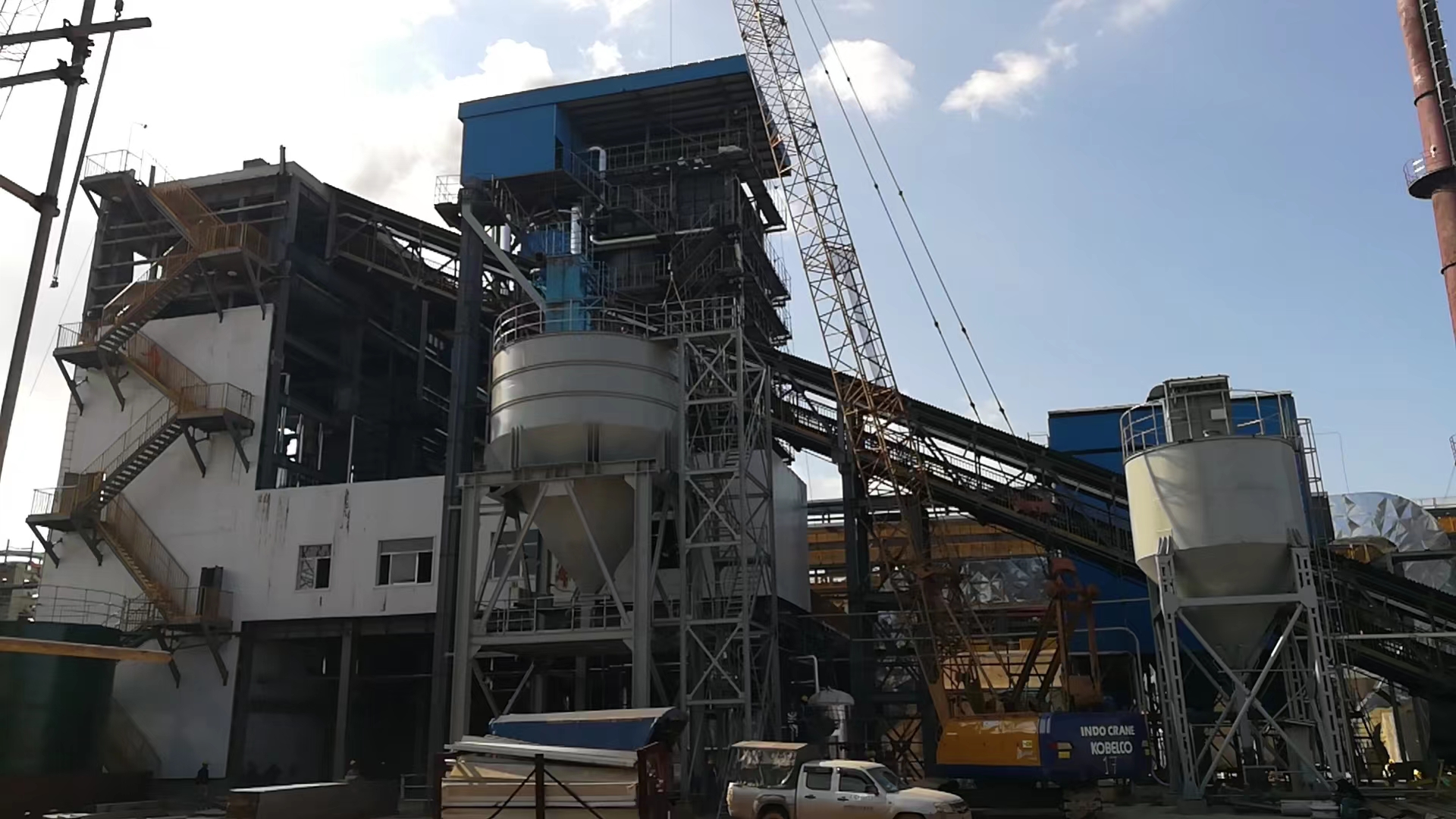
What Are the Differences Between CFB, Chain Grate, and Pulverized Coal Boilers?
Many plant owners struggle when deciding between Circulating Fluidized Bed (CFB), chain grate stoker, and pulverized coal (PC) boilers. Each technology burns coal in a different way, operates within unique efficiency ranges, and has specific fuel flexibility and emission performance profiles. Selecting the wrong type can result in excessive fuel costs, poor combustion efficiency, and non-compliance with environmental limits.
In short, CFB boilers excel in fuel flexibility and low emissions, chain grate boilers are cost-effective for smaller capacities with coarse coal, and pulverized coal boilers deliver the highest efficiency for large-scale, high-grade coal power generation.
CFB boilers can burn low-grade coal and biomass efficiently without major design changes.True
The fluidized bed combustion environment allows CFB boilers to handle a wide range of fuels, including low-calorific coal and biomass, with stable efficiency and reduced emissions.
🔍 Key Technical Comparison of CFB, Chain Grate, and Pulverized Coal Boilers
| Feature | CFB Boiler | Chain Grate Boiler | Pulverized Coal Boiler |
|---|---|---|---|
| Typical Capacity Range | 20–500 MW | 1–50 MW | 100–1,300 MW |
| Coal Particle Size | 0–10 mm | 10–50 mm | <0.1 mm (pulverized) |
| Combustion Method | Fluidized bed with circulating particles | Moving grate with layer combustion | Suspension firing in furnace |
| Fuel Flexibility | Very high (low-grade coal, biomass, waste fuel) | Medium (specific coal size range) | Low (high-grade coal preferred) |
| Thermal Efficiency | 85–90% | 75–85% | 88–94% |
| SO₂ & NOₓ Emissions | Low (in-furnace desulfurization possible) | Medium to high (needs external FGD/SCR) | High NOₓ, needs advanced control |
| Load Response | Medium | Slow | Fast |
| O&M Cost | Medium | Low | High |
| Best Application | Multi-fuel plants, emission-sensitive areas | Small industrial plants, low-cost setups | Large-scale base-load power plants |
📊 Coal Quality Suitability Table
| Coal Type | CFB | Chain Grate | Pulverized Coal |
|---|---|---|---|
| Anthracite | ⚠️ Limited | ✅ Possible | ✅ Preferred |
| Bituminous | ✅ Good | ✅ Good | ✅ Excellent |
| Sub-Bituminous | ✅ Excellent | ⚠️ Needs adjustments | ✅ Good |
| Lignite | ✅ Excellent | ❌ Poor match | ⚠️ Special design needed |
| Biomass | ✅ Excellent | ⚠️ Limited | ❌ Not suitable |
✅ = Suitable ⚠️ = Possible with modifications ❌ = Not recommended
⚙️ Main Design & Operation Differences
CFB Boilers
Burn fuel in a fluidized bed at ~850°C, with continuous particle circulation for complete combustion.
Can integrate limestone for in-bed SO₂ removal.
Excellent for high-ash, high-moisture, and low-grade coals.
Chain Grate Boilers
Use a moving grate to transport coal through combustion zones.
Simple, low capital cost, but less efficient than CFB or PC for large outputs.
Better for medium-sized industrial heating or process steam.
Pulverized Coal Boilers
Grind coal into fine powder and inject it into the furnace with combustion air.
Achieve high flame temperatures and efficiency, ideal for large-scale electricity production.
Require more complex milling, burner, and emission control systems.
✅ Conclusion
When choosing between CFB, chain grate, and pulverized coal boilers, the decision should be based on fuel availability, required capacity, environmental compliance needs, and O&M budget. For multi-fuel flexibility and in-furnace emission control, CFB is unmatched. For low-cost, small-scale applications, chain grate remains viable. For high-efficiency, large power generation, pulverized coal is the proven choice.

How Do Pressure and Temperature Ratings Affect Performance and Cost in Steam Boilers?
In industrial boiler procurement, many buyers overlook how pressure and temperature ratings directly impact not only the boiler’s performance but also its price tag. Selecting the wrong ratings can lead to underperformance, wasted fuel, or inflated capital expenditure. Higher ratings can produce more energy-dense steam and improve process efficiency, but they also demand stronger materials, more robust safety systems, and higher manufacturing precision — all of which add cost.
Simply put, higher pressure and temperature ratings enable greater thermal efficiency and output capacity but increase capital cost, complexity, and maintenance demands due to more stringent design, material, and safety requirements.
Raising boiler pressure always improves efficiency without drawbacks.False
While higher pressure can improve thermal efficiency by producing higher-enthalpy steam, it also increases equipment cost, requires more robust safety systems, and may reduce component lifespan if not managed properly.
Choosing the right balance between ratings and application needs is critical — too low, and you waste potential efficiency; too high, and you risk unnecessary cost and maintenance burden.
🔍 Pressure & Temperature Ratings — Technical Impact
| Parameter | Low Pressure (<1.0 MPa) | Medium Pressure (1.0–4.0 MPa) | High Pressure (>4.0 MPa) |
|---|---|---|---|
| Steam Temp (Saturated) | 100–184°C | 184–250°C | 250–350°C |
| Typical Use | Space heating, small process loads | General industrial processes | Power generation, heavy process |
| Thermal Efficiency Potential | Low–Moderate | Moderate–High | High |
| Material Grade | Carbon steel | Alloy steel mix | High-alloy, creep-resistant steel |
| Safety Systems | Basic | Advanced | Highly advanced, multi-redundant |
| Capital Cost | Low | Medium | High |
| O&M Cost | Low | Medium | Medium–High |
📊 Effect of Temperature Rating on Steam Enthalpy & Output
| Steam Temperature | Enthalpy (kJ/kg) | Relative Turbine Output Potential |
|---|---|---|
| 150°C | ~2,780 | Low |
| 250°C | ~2,930 | Medium |
| 540°C (superheated) | ~3,450 | High |
| 600°C (ultra-superheated) | ~3,650 | Very High |
⚙️ Why Ratings Drive Cost
Material Requirements
High temperatures require creep-resistant alloys to maintain strength over time.
High pressures demand thicker walls per ASME Section I & EN 12952 standards.
Manufacturing Tolerances
High-rated boilers require precision welding, advanced NDT, and more rigorous QA/QC.
Auxiliary Systems
Higher pressures need stronger feedwater pumps and more capable safety valves.
Operational Complexity
Superheated high-pressure systems need more sophisticated control systems to avoid thermal stress damage.
✅ Practical Selection Advice
For heating and low-temp processes: Low pressure/temperature designs minimize cost and complexity.
For industrial process steam: Medium ratings balance efficiency with manageable cost.
For power generation or high-grade steam needs: High ratings with superheating deliver maximum energy density but require higher budget and skilled O&M staff.
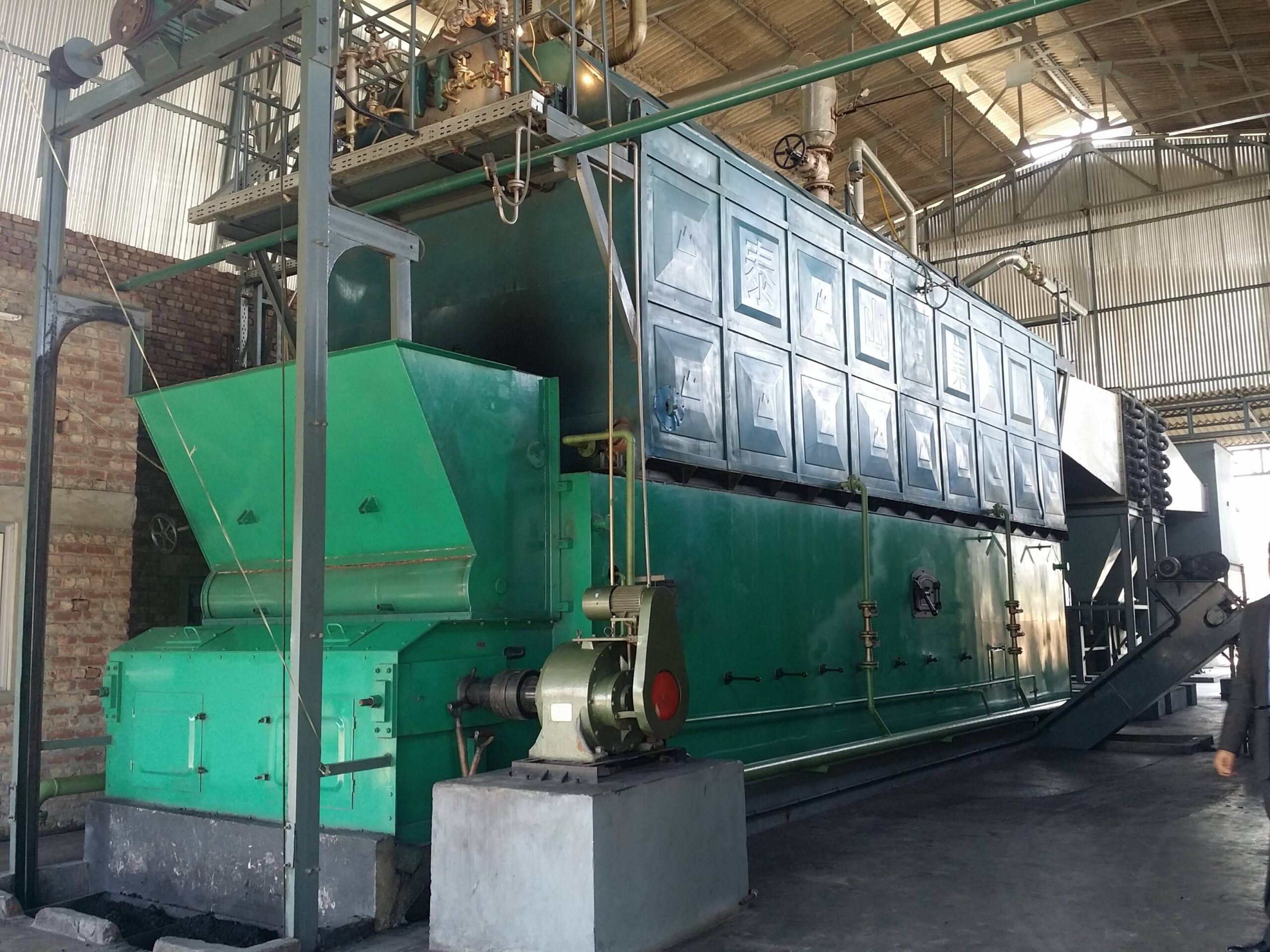
What Emission Control Options Are Necessary for Compliance and Efficiency in Industrial Boilers?
Tighter environmental regulations worldwide mean that industrial boiler operators can no longer rely solely on good combustion practices to stay compliant. Failure to meet NOₓ, SO₂, particulate, or CO₂ limits can lead to heavy fines, production shutdowns, and reputational damage. At the same time, poorly controlled emissions also waste fuel energy, reducing efficiency. The solution lies in combining the right emission control technologies with efficiency optimization systems so that your plant stays legal, sustainable, and cost-effective.
In practice, emission compliance in industrial boilers is achieved through a combination of primary combustion optimization (low-NOₓ burners, O₂ trim), flue gas cleaning systems (ESP, baghouse, scrubbers, SCR), and continuous emission monitoring, all tailored to fuel type and local regulations to balance environmental performance with operational efficiency.
All emission controls reduce efficiency by adding parasitic load to the boiler system.False
Some controls, like economizers and O₂ trim systems, actually improve efficiency while reducing emissions, whereas particulate and gas cleaning systems may add small energy penalties but prevent costly non-compliance.
Selecting the right setup requires considering fuel type, emission limits, plant size, and available budget — overdesign wastes money, while underdesign risks legal trouble.
🛠 Common Emission Control Technologies
| Control Method | Target Pollutant | Efficiency Impact | Notes |
|---|---|---|---|
| Low-NOₓ Burners | NOₓ | Neutral–Positive | Reduces flame temp & staged combustion to cut NOₓ formation |
| Overfire Air (OFA) | NOₓ | Neutral | Secondary air injection lowers peak combustion temp |
| Flue Gas Recirculation (FGR) | NOₓ | Neutral–Slight Negative | Cools flame, reuses flue gas; works best with gas fuels |
| Selective Catalytic Reduction (SCR) | NOₓ | Slight Negative | High removal (>90%); uses ammonia or urea catalyst |
| Electrostatic Precipitator (ESP) | PM (Dust) | Neutral | Low energy use, high particulate capture (>99%) |
| Baghouse Filter | PM | Slight Negative | Fabric filters for fine particulate; needs periodic cleaning |
| Wet Scrubber | SO₂, PM | Slight Negative | High removal (>95%); generates wastewater |
| Dry Sorbent Injection (DSI) | SO₂, HCl | Neutral–Slight Negative | Simple retrofit, moderate removal efficiency |
| O₂ Trim System | CO, Efficiency | Positive | Real-time O₂ monitoring to optimize combustion air |
| Economizer | CO₂, Efficiency | Positive | Recovers waste heat, reducing fuel use & emissions |
📊 Example: Effect of Control Combinations on Compliance & Efficiency
| Fuel Type | Baseline Emissions | Controls Added | Emission Reduction | Efficiency Change |
|---|---|---|---|---|
| Coal | High SO₂, NOₓ, PM | Low-NOₓ Burner + SCR + ESP + Wet Scrubber | NOₓ ↓ 90%, SO₂ ↓ 95%, PM ↓ 99% | -1.5% net |
| Natural Gas | Low PM, NOₓ | Low-NOₓ Burner + O₂ Trim | NOₓ ↓ 50%, CO ↓ 40% | +1% net |
| Biomass | High PM, Variable SO₂ | Cyclone + Baghouse + DSI | PM ↓ 98%, SO₂ ↓ 60% | -0.5% net |
🔑 Integration for Maximum Benefit
Combine controls: Low-NOₓ burners + SCR for NOₓ, ESP or baghouse for particulates, scrubbers or sorbent injection for SO₂.
Automate optimization: Continuous Emissions Monitoring Systems (CEMS) + O₂ trim + advanced controls.
Match to regulations: Design for the strictest limit you must meet — either local or export market.
✅ Practical Takeaways
Fuel choice dictates technology — gas needs NOₓ control, coal needs PM + SO₂ + NOₓ, biomass focuses on PM.
Efficiency can rise or fall depending on the mix — economizers and trim systems boost efficiency, while mechanical filtration adds slight parasitic load.
Retrofit vs. new build — retrofitting controls is possible but costlier per ton of pollutant removed compared to designing them into a new system.
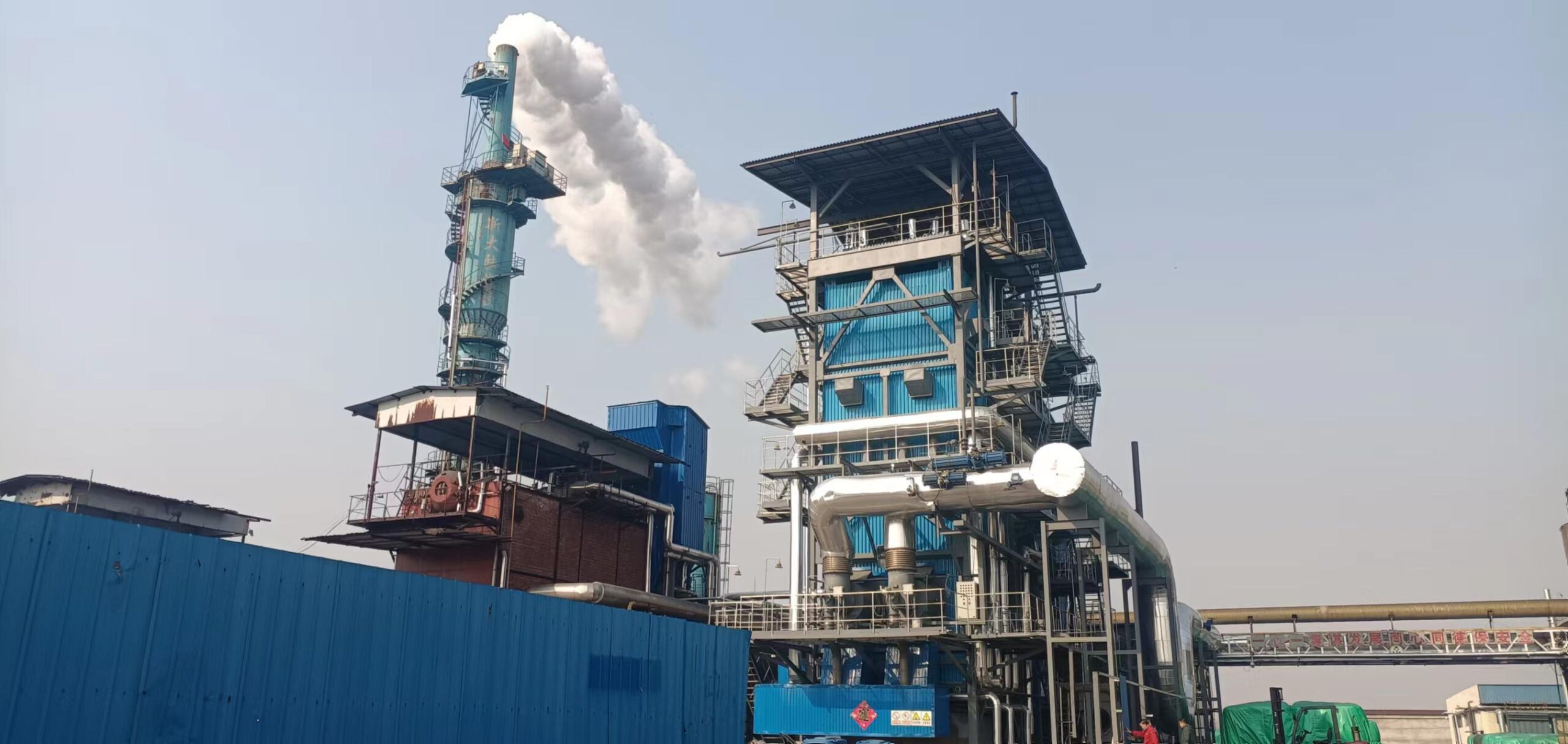
How Important Is After-Sales Service and Spare Parts Support in Long-Term Boiler Operation?
When industrial boilers are purchased, buyers often focus heavily on specifications, efficiency, and price — yet underestimate the role of after-sales service and spare parts availability. This oversight can lead to extended downtime, production losses, and increased operational costs. In high-output facilities, even a few hours of unplanned shutdown can translate into six-figure losses. Over the years, the availability of skilled service engineers and a steady supply of OEM or equivalent-quality spare parts becomes as critical as the boiler’s original build quality. Choosing a supplier without strong after-sales infrastructure is a risk that compounds over the boiler’s 20–30 year lifespan.
In industrial boiler operation, after-sales service and spare parts support are essential for ensuring continuous uptime, minimizing downtime risk, extending equipment lifespan, and keeping operating costs predictable — making them as important as the initial purchase decision.
Spare parts from third-party suppliers are always as reliable as OEM parts.False
While some third-party parts meet or exceed OEM quality, others can compromise performance or safety; quality control and certification are critical.
A strong after-sales program ensures that maintenance intervals are met, troubleshooting is fast, and consumables (like gaskets, burner nozzles, and sensors) are always in stock — preventing production bottlenecks and regulatory compliance issues.
🔍 Key Elements of After-Sales Service
| Service Component | Purpose | Operational Impact | Best Practice |
|---|---|---|---|
| Preventive Maintenance | Scheduled inspections & servicing | Reduces failure probability | Follow OEM maintenance intervals strictly |
| Corrective Maintenance | Emergency breakdown repairs | Minimizes unplanned downtime | Have service contracts with guaranteed response times |
| Technical Support | Remote diagnostics & troubleshooting | Speeds up resolution | Use suppliers with 24/7 hotline |
| Spare Parts Supply | Availability of OEM or approved parts | Prevents extended outages | Keep critical spares on-site |
| Training & Documentation | Operator skill enhancement | Reduces human error | Annual refresh training for staff |
| Software/Control Updates | Keeps automation current | Improves efficiency & compliance | Include in long-term service contracts |
📊 Example: Cost of Downtime vs. Service Availability
| Plant Type | Hourly Downtime Cost | Typical Repair Delay w/ OEM Support | Delay Without Support |
|---|---|---|---|
| Food Processing | $10,000–$25,000 | < 8 hours | 2–3 days |
| Chemical Plant | $30,000–$50,000 | 12 hours | 4–5 days |
| Power Plant | $100,000+ | 24 hours | 5–7 days |
⚙ Spare Parts Strategy for Long-Term Operation
Critical Spares On-Site: Burner tips, feedwater pump seals, safety valves, pressure transmitters.
Vendor Stock Agreement: Ensure supplier keeps certain parts in regional warehouses.
Lifecycle Planning: Order long-lead-time parts (like superheater tubes) before failure risk peaks.
✅ Practical Takeaways
Strong service contracts reduce total cost of ownership by preventing catastrophic failures.
Spare parts availability should be checked before purchase — not when a breakdown happens.
Choose suppliers with global reach or regional service hubs for quick dispatch.
🔍 Conclusion
The right coal-fired boiler choice depends on matching technical requirements with fuel characteristics and compliance obligations. A well-chosen system will ensure high efficiency, stable performance, and regulatory conformity throughout its lifespan.
📞 Contact Us
💡 Need expert guidance on selecting a coal-fired boiler? We provide technical assessments, fuel analysis, and custom boiler design to suit your project’s specific needs.
🔹 Get the right coal-fired boiler solution that balances cost, performance, and compliance. 🏭🔥📊✅
FAQ
What factors should I consider when choosing a coal-fired boiler?
Key selection criteria include:
Capacity and steam output – Match boiler output to your process or power demand.
Boiler type – Chain grate, circulating fluidized bed (CFB), or pulverized coal boilers each have unique advantages.
Fuel availability and quality – Ensure compatibility with local coal types (lignite, bituminous, anthracite).
Efficiency rating – Higher efficiency lowers fuel consumption and operating costs.
Emission compliance – Select boilers with built-in NOx, SOx, and particulate control systems if regulations require.
Which type of coal-fired boiler is best for industrial applications?
Chain grate boilers – Reliable and simple operation, suitable for small to medium capacities.
Circulating fluidized bed (CFB) boilers – Excellent fuel flexibility, better emissions control, and stable combustion at variable loads.
Pulverized coal boilers – High efficiency, suitable for large-scale power generation, but require higher investment and maintenance.
How do I match boiler capacity to my requirements?
Calculate steam demand based on process load or power generation needs.
Account for peak loads and future expansion.
Consider boiler turndown ratio to ensure efficiency during partial loads.
Work with suppliers to size the boiler based on actual operating conditions and safety margins.
What are the efficiency considerations when selecting a coal-fired boiler?
Efficiency depends on:
Combustion technology – CFB and pulverized coal units generally achieve higher efficiencies than chain grate designs.
Heat recovery systems – Economizers, air preheaters, and condensing units help recover waste heat.
Automation and control systems – Optimize fuel-air ratio for maximum combustion efficiency.
A 2–5% efficiency improvement can lead to significant annual fuel cost savings.
How can I ensure compliance with emissions regulations?
Choose boilers with low-NOx burners, desulfurization units, and baghouse or electrostatic precipitator systems.
Check local regulations for particulate, SOx, and NOx limits.
Opt for designs that meet or exceed international standards like US EPA or EU IED guidelines.
Compliance not only avoids fines but also improves environmental performance and corporate reputation.
References
IEA – Coal Combustion and Boiler Technology – https://www.iea.org
DOE – Industrial Boiler Selection Guidelines – https://www.energy.gov
ASME – Boiler Efficiency and Design Standards – https://www.asme.org
Cleaver-Brooks – Solid Fuel Boiler Options – https://www.cleaverbrooks.com
Hurst Boiler – Coal Boiler Product Information – https://www.hurstboiler.com
Spirax Sarco – Steam Boiler Selection Guide – https://www.spiraxsarco.com
BioEnergy Consult – Coal-Fired Boiler Emissions – https://www.bioenergyconsult.com
EPA – Air Emissions Standards for Boilers – https://www.epa.gov
Engineering Toolbox – Steam and Heat Demand Calculations – https://www.engineeringtoolbox.com
DNV – Power Plant Boiler Efficiency Optimization – https://www.dnv.com

